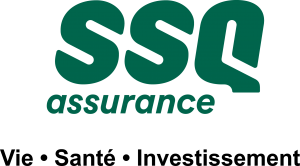Magazines and newsletters
INFO-FADOQ GIM
All the news from our region in one click! Bulletin Automne 2022 Fall Bulletin...
If you want to know the best treatments for eczema, age spots and rosacea, read on.
This skin condition is characterized by the following symptoms:
Often associated with asthma and allergies, eczema comes and goes in alternating cycles of flare-ups and periods of remission.
Unfortunately, no treatment can completely cure eczema. However, medications prescribed by a doctor can reduce inflammation and itching.
Cortisone-based creams
Various creams containing a corticosteroid can prove beneficial, depending on the severity of the condition. Creams with a lower steroid formulation can be applied once or twice a week. More potent ones can be used only for a short period of time since they can thin the skin.
Antihistamines
If eczema is one item on your long list of allergy symptoms, then antihistamines are advised.
Ultraviolet light therapy
In some cases, UVA or UVB therapy will be prescribed. However, the treatment can increase two risks: skin cancer and solar dermatitis.
Age spots (also called brown or sun spots, or lentigos) are the result of exposure to the sun and the over-production of melanin.
They can start to appear at around age 40, on areas of the body that have seen the most sun:
Generally speaking, age spots are not dangerous. However, it is advisable to consult a dermatologist to check any marks that appear as a result of sun exposure or other skin lesion.
Regularly check age spots for changes in size, colour, bleeding, thickening, etc. These can be the first signs of melanoma (skin cancer).
If your age spots are not melanoma, you might want to have them removed, for cosmetic reasons.
Hyperpigmentation creams
Your doctor might prescribe a cream to reduce the pigmentation of brown spots. However, be sure to apply sunscreen before heading out into the sun.
Laser
Laser treatments destroy the melanin, making brown spots fade over time.
Sunbathing is strongly discouraged after laser treatment. Rashes after the treatment can change into other pigmented spots when exposed to the sun.
Liquid nitrogen
This treatment is the same as for warts. With brown spots, the liquid nitrogen discolours the mark. The procedure is not advisable for people with darker skin.
As with laser treatment, it is best to avoid exposure to the sun immediately after treatment.
Exfoliation
An acid-based treatment is applied to the skin to exfoliate the deep layers of the skin and eliminate old age spots.
Brown spots are caused by exposure to the sun.
To prevent them, adopt a few preventive measures when spending time in the sun:
The signs of rosacea start to appear around the age of 30.
Starting as red patches on the cheeks, nose, forehead and chin, they eventually become permanent, like dilated blood vessels and red pimples (papules).
People with fair skin and light eyes, and those who blush easily are more prone to suffer from this skin condition.
The quicker you act, the greater the chance of calming the redness and delaying the appearance of dilated vessels. There is no treatment that will completely heal rosacea.
Medication
Several types available on the market, each with different active ingredients:
Accutane®
Often prescribed for acne, Accutane® can sometimes help severe rosacea sufferers. The treatment is not without side effects and close medical monitoring is needed.
Surgery
Two types of surgery can help: electrocoagulation and laser, which leaves fewer scars. Consult a healthcare professional to find out which option is best for you.
Dermabrasion
A rapidly rotating brush is used to “sand” the skin, removing the outer layers and stimulating the growth of new skin cells.
Keep a diary to identify what triggers your rosacea outbreaks. This will help you reduce the intensity of the symptoms.
Ways to prevent flare-ups:
If you suffer from any of these three skin conditions, a health professional is the most competent person to diagnose your situation and advise you on appropriate treatments.
